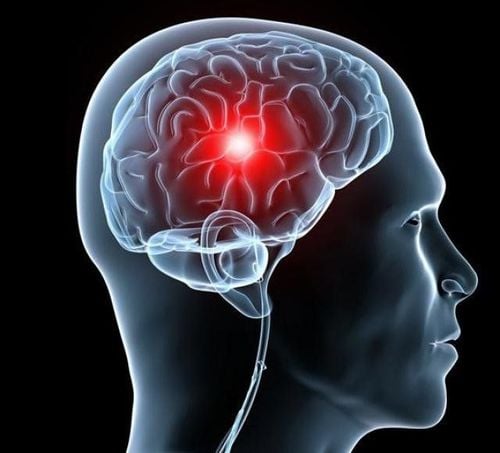This is an automatically translated article.
The article was professionally consulted by Specialist Doctor I Nguyen Xuan Tinh - Anesthesiologist - Resuscitation - Department of General Surgery - Vinmec Phu Quoc International General Hospital. The doctor has more than 18 years of experience studying and working in the field of Anesthesia - Resuscitation.We have all faced some degree of pain in different areas of the body, be it dealing with a crippling or more persistent pain like chronic pain. In those painful moments, the pain seemed overwhelming and there was no way out. So can we control pain with our thoughts alone? Here are six ways to use your mind to effectively manage pain.
1. Can you control pain with your mind?
We have all experienced varying degrees of pain. In those painful moments, the pain seems overwhelming and we can't get rid of it. Even pain can make us despair. But can we manage pain with our minds? The short answer is yes. Using certain techniques, we can actually alleviate some forms of pain with the mind.Christine Tolman is a licensed clinical professional counselor and Talkspace therapist based in Idaho. “There is a lot of evidence that we can control pain with our thoughts,” she explains. How we perceive our pain and how it impacts our daily lives can change the way pain impacts us. Of course, it's not as simple as thinking about your pain. How much you can ease your pain depends on the type of pain you're having and the technique you use.
Only certain types of pain can be controlled with your mind. The first thing to note is that not all types of pain can be dealt with by our minds. However, acute and chronic pain can be addressed with your mind, Tolman says: “Now, remember that if you start therapy with a broken arm, that pain won't could disappear,” she said. “But chronic pain and pain of unknown origin can be managed with your own mind. There is a big link between pain and everyone's thoughts, and by changing your thoughts, you can change the pain.”
The Centers for Disease Control estimates that 20.4% of US adults live with chronic pain. And reports also indicate that the most important contributors to chronic pain are migraines, rheumatoid arthritis and nerve damage - as well as emotional trauma. Jeannie Sperry, a psychologist specializing in pain recovery at the Mayo Clinic, says it's rare for someone to experience chronic pain without anxiety or depression.
Tolman says: “When a person experiences chronic pain will notice that this pain has become part of their identity. “These therapeutic techniques can change the way a person sees themselves as a person in pain. It can also change the way they see the limitations of pain and its everyday impact."
2. 6 ways to control pain with your mind
Pain relievers are a great way to control pain, but they often have unpleasant and even serious side effects when used for a long time. If you have back pain, fibromyalgia, arthritis, or other chronic pain that interferes with your day-to-day life, you should consider finding a way to relieve your discomfort without resorting to medication. Some older techniques — including meditation and yoga — as well as newer forms can help reduce our need for pain medication.Research shows that because pain involves both mind and body, mind-body therapies can help alleviate pain by changing our perception of it. The way we feel pain is influenced by our genes, emotions, personality and lifestyle. It is also influenced by past experiences. If we have pain for a while, the brain can perceive pain signals even after the signals are no longer sent.
The Benson-Henry Institute for Mind Medicine at Harvard-affiliated Massachusetts General Hospital specializes in helping people learn techniques to relieve stress, anxiety, and pain. Dr. Ellen Slawsby, clinical assistant professor of psychiatry at Harvard Medical School who works with patients regularly at the Benson-Henry Institute, suggests learning a few techniques so we can deal with them. pain with the methods that work best for you. Dr. Slawsby says: "I tend to think of these techniques as similar to flavors in an ice cream shop. Depending on your mood, you may want a different ice cream flavor - or a different technique. Practicing a combination of mind and body skills can increase pain relief."
The following techniques can help us avoid pain and can help the body form a response to similar pain sensations when they return.
2.1 Deep Breathing In fact, deep breathing is at the heart of all techniques, so this method should be the way we need to apply it first. Inhale deeply, hold for a few seconds and exhale. To help increase focus, we can use a word or phrase to guide ourselves. For example, you may want to inhale gently and exhale more forcefully. There are also a number of apps for smartphones and tablets that use sounds and images to help us keep breathing.

2.3 Meditate with familiar images Start breathing deeply, paying attention to each breath. Then, listen to soothing music or imagine being in a quiet environment. If you find your mind is not focused, remember familiar images that evoke peace and start refocusing.
2.4 Mindfulness Choose any activity you enjoy like reading poetry, going for a walk, gardening, or cooking and completely focus on that. Pay attention to every detail of what we're doing and how our senses and emotions are reacting. The practice brings mindfulness to all aspects of one's life.

2.6 Positive Thinking “When we're sick, we tend to focus on what we can't do. However, refocusing on what you can do instead of what you can't will give you a more accurate view of yourself and the world at large,” says Dr. Slawsby. She recommends keeping a journal to list all the things that make you feel positive each day. "We may have our limits, but that doesn't mean we're not fully human."
Pains, whether acute or chronic, always appear in each of our lives and to some extent make us feel uncomfortable. In cases of severe pain, many people turn to pain relievers to ease them. However, pain relievers often leave side effects that are not good for health, so in recent years, many people have tried some methods of mind control such as deep breathing, meditation, mindfulness. ... and get remarkable results.
Please dial HOTLINE for more information or register for an appointment HERE. Download MyVinmec app to make appointments faster and to manage your bookings easily.
References: talkspace.com, health.harvard.edu, nia.nih.gov














